#lactuca sativa
Explore tagged Tumblr posts
Text
A research group has developed an innovative method for the biofortification of leaves and other green plant tissues, increasing their content of healthy substances such as beta-carotene, the main precursor of vitamin A in the human diet. The work demonstrates that by using biotechnological techniques and treatments with high light intensity, the levels of beta-carotene in leaves can be multiplied up to 30 times by creating new places to store it without affecting vital processes such as photosynthesis. The results are published in the Plant Journal.
Continue Reading.
180 notes
·
View notes
Photo
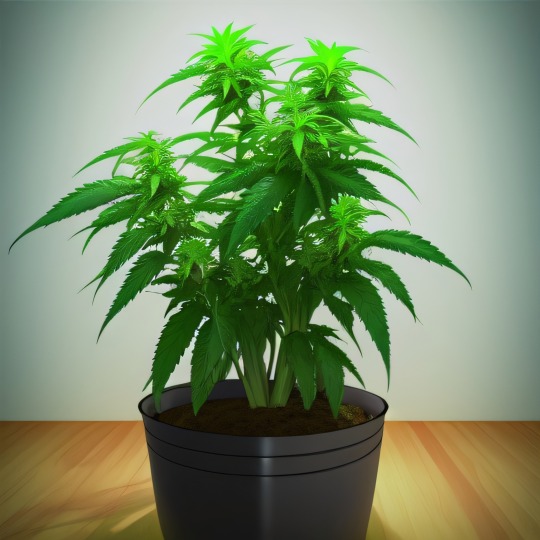
#smoke weed#smokeweed#marijuana strains#kush#getliftedkw%#hemp benefits#lactuca sativa#weedstagram420
50 notes
·
View notes
Photo

4 notes
·
View notes
Link
1 note
·
View note
Text

I know I make a lot of jokes about the lettuce incident, but I couldn't help noticing something interesting about it: have you ever noticed how, in the Contendings, Seth never complained about his fancy vegan breakfast despite being dressed with a very special sauce? And he basically summoned the whole solar court completely unaware of what he just ate?
Now, unless his taste buds are just as sterile as his deserts, I guess the guy did enjoy his meal after all 😂🥬
Jokes aside, there's an actual explation for that: the Lactuca sativa, which was the lettuce variety that was widespread in Ancient Egypt, can naturally produce a white liquid when pressed. It was, in fact, a sacred vegetable used in offerings for fertility gods such as Min, and it was also considered an aphrodisiac rather than an actual meal. So basically, it's the equivalent of having Seth eating chocolate for breakfast! Guess he likes his mornings sweet 😂
Btw, here's the original reference for the meme, you can still find this thing on the Wikipedia page for "excreta-based compost" if you're interested lol
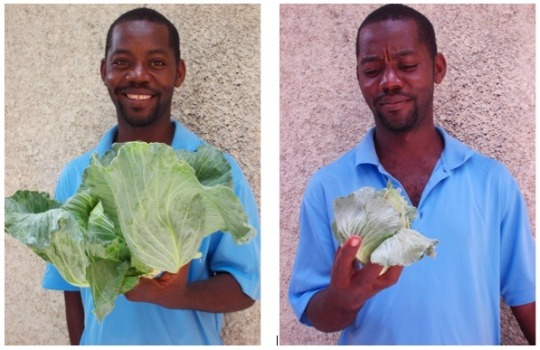
84 notes
·
View notes
Text
Plants for The Flesh
Clover (Trifolium)
Grain/Wheat (Triticum)
Milo (Sorghum)
Lemongrass (Cymbopogon)
Ryegrass (Lolium)
Lavender (Lavandula)
Sunflower (Helianthus annuus)
Alfalfa (Medicago sativa)
Lettuce (Lactuca sativa)
Corn (Zea mays)
Barley (Hordeum vulgare)
Oat (Avena sativa)
Soybeans (Glycine max)
Timothy hay (Phleum pratense)
Mangelwurzel (Beta vulgaris)
Bamboo (Bambusa vulgaris)
Chives (Allium schoenoprasum)
Oregano (Origanum vulgare)
Parsley (Petroselinum crispum)
Thyme (Thymus vulgaris)
Rosemary (Salvia rosmarinus)
Basil (Ocimum basilicum)
Cilantro (Coriandrum sativum)
Fennel (Foeniculum vulgare)
Garlic (Allium sativum)
Anise (Pimpinella anisum)
#og.txt#popculture magic#paganism#pop culture paganism#tma paganism#tma pcp#the magnus archives#tma#the flesh
14 notes
·
View notes
Text

Lettuce!
The first time i encountered lettuce plants going to seed i thought they looked like little palm trees... I was really surprised at how thick and sturdy the stems become when they are left to live out their full life cycle, especially if lots of the bottom leaves are stripped to reveal this woody stem. This is one of the joys of seed saving for me, seeing plants transform (often into relatively monstrous proportions!) and getting to appreciate the plant in a totally different way.
I didn't know at the time that lettuce was comparatively easy to save seed from, with the plants being mostly self fertile with perfect flowers, so there is minimal chance of crossing. The official advice is still to leave several meters between varieties, especially in hotter climates (where insects are more active/abundant? I have no idea), but if that would stop you saving your own lettuce seed for your own use, I say ignore the advice! I had been enjoying the benefits of saved lettuce seed, with the saved Cocarde seed being the most reliable germination in my fortnightly salad sowings that I was overseeing, often out performing much newer, bought in seed. Since I found out it could be achieved without complicated isolation netting and fears of cross pollination, I'd been dying to try it for myself. Just one plant can produce up to 10 grams of seed (that's around 8000 seed!) so it is the gift that keeps on giving. I also feel that most organic lettuce varieties are open pollinated and not hybrids, another plus for ease of mind when seed saving from this crop.
There are 3 main types of lettuces cultivated in the UK-
Romaine or cos lettuces, which form tight heads with long leaves, a typical example being little gem
Head lettuces, which again form heads but can be looser, and include smoother butter head types and more frilly batavia types
Leaf lettuces, which don't form heads and are often more frilly. an example is lollo rossa
They are all within the Lactuca sativa species so could all technically cross with eachother.
Lettuce are surprisingly hardy plants and such a mainstay for UK market gardeners, selling them as whole heads, and as part of mixed salad bags -which I believe are the highest value product for growers, although I have no recollection of where I heard that so can't fact check it! It makes sense in that it is high turnover, and many successions can be grown in a season. I personally find it hard to get too over excited about lettuce, preferring the more showy fruiting crops, and things that can be cooked and preserved in a variety of exciting ways. And seeing that it is often the veg that goes the most to waste (people love to buy mixed salad bags in shops because they look so appealing, but often fail to get round to eating them before they go slimy), it's hard to see it as the most sustainable crop. However I have made a deal with myself to get over my trepidation and finally experiment with lettuce soup this season!


As the stalks elongate and these beautiful heads start forming, the plants will want some kind of support if they are standing alone as this one is, we do have some that seem to be fairing quite well supported by tomato plants either side! I think it is quite common for several plants to die off at this stage, so select more than you think you'll need. Removing lower leaves can help to reduce the risk of rotting/moldy leaves/ slug damage leading to disease.

(A beast of a slug found hanging out under the module trays)
Watch out for flower buds starting to form, when open they almost look like little dandelion flowers, and in fact there method of distribution is the same with fluffy tops forming at full maturity.
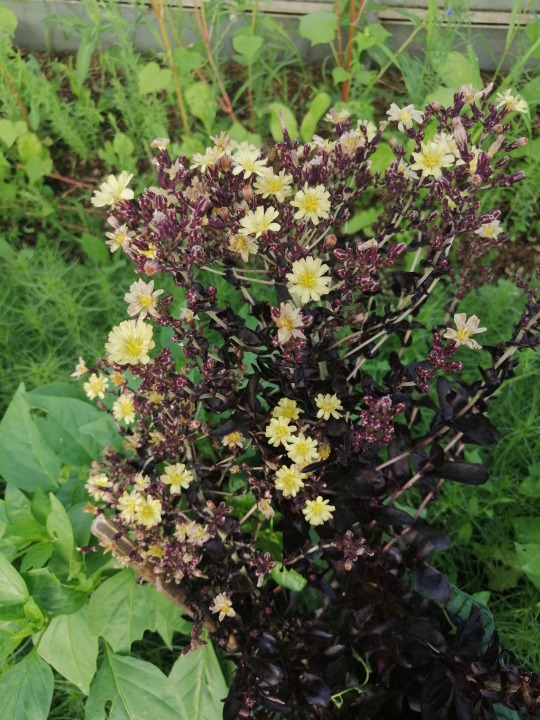
It won't be long after flowering (about 2 weeks) that those seeds are mature, however flowers appear at varying times on the same plant so there are different methods of getting as much good, mature seed off the plant as possible. A good method for wetter UK conditions would be digging up the whole plant, roots and all, bagging the roots to stop soil dropping in with the seeds, and in a well ventilated, dry area , hanging the plant upside down in a paper bag (could be a potato sack or similar, just check for holes and turn it inside out so it's clean on the inside). Do this when about 50% of the seed are mature some will continue to mature on the plant and drop into the bag, ensuring a fairly good yield. Alternatively you can always just hand harvest mature seed from the plant as and when they come, with the main stem of the lettuce generally producing the best seed. They are mature when they easily separate from the plant.
Make sure the seed is completely dry before storing in a cool, dark, dry place.
These are just my musings from observations and my experience, as an enthusiast not a professional. My recommendations for deeper dives from the experts -
The seed growers podcast focused on lettuce seed production with Frank Morton
diyseed.org has beautiful videos going into detail on the seed saving process of most vegetables you could think of
realseeds.co.uk are an open pollinated seed company that encourage and have lots of resources on saving seed
8 notes
·
View notes
Text
youtube
For those who have moved north in recent years and are still grappling with the warmer conditions, Jerry offers a class in Sub-tropical Gardening 101.
The weather:
Just because you’ve moved to the warm sub-tropics, doesn’t mean you’ll no longer get frosts! And while there’s plenty of sunshine, summer rainfall can be patchy and erratic.
There are two main seasons: warm and cool.
* Warm runs from December to March and it’s generally wetter. Rainfall can be short and heavy.
* The cool season runs from May to November and that’s generally drier, with lower temperatures and less humidity.
Soil: Jerry recommends adding compost to the soil whenever sowing or planting to help combat these seasonal shifts. And always cover the soil with mulch to capture and store seasonal downfalls. Jerry uses chopped sugar cane.
Starchy staples - potatoes can rot or wither in Brisbane, so Jerry grows yams, arrowroot, sweet potatoes and bananas instead.
He recommends sweet potato and an easy plant for beginners; plant in a raised bed for good drainage, then feed monthly and water sparingly. Watch for grasshoppers and lift all your crop at harvest to avoid leaving food for weavils. Crop rotation avoids reinfestation, too. Plant in spring for harvest after 3-4 months. Don’t forget the new shoots are edible, too!
Leafy greens can go to seed quickly in the heat. They do best in the cool season but sowing for succession harvests helps, too. Jerry grows a range of greens, including Ethiopian cabbage, leeks, sweet leaf, kings salad, and herbs.
A good starter for beginners is celtuce, which tastes like a cross between celery and lettuce. As well as using the leaves, the stems can be peeled, sliced and stir-fried.
Fruit trees - Jerry says you need at least one exotic sub-tropical fruit and his pick is the papaya. You can eat the ripe fruit, make a lovely green papaya salad, the seed relieves constipation and the chopped leaves have a peppery taste. Treat as short-term perennials and replace every 2-3 years. To avoid fruit fly, pick the fruit green and ripen it indoors.
Tomatoes - in the subtropics the seed should be sown in March for planting in April or May because they grow better in the dry season. This also helps avoid fruit fly attack - until late September, at least. Grow cherry tomatoes to reduce the risk of caterpillar attack.
Frangipani - a sub-tropical must-have. Don’t limit yourself to the old-fashioned white flowers - there are hundreds of cultivars that will grow in the sub tropics, so enjoy them and the different fragrances they bring. They need full sun and excellent drainage. Feed with a slow-release fertiliser that’s high in phosphorous and potassium twice a year: in spring and summer.
Featured plants:
Winged yam (Dioscorea alata)
Banana (Musa cv.)
Sweet potato (Ipomoea batatas cv.)
Bok choy (Brassica rapa cv.)
Ethopian cabbage (Brassica carinata)
Leek (Allium ampeloprasum cv.)
* Sweet leaf (Breynia androgyna)
* Kings salad (Cosmos caudatus)
Rice Paddy Herb (Limnophila aromatica)
Fish Mint (Houttuynia cordata)
*La Lot (Piper sarmentosum)
Celtuce (Lactuca sativa cv.)
*Papaya (Carica papaya cv.)
Tomato ‘Grosse Lisse’ (Solanum lycopersicum cv.)
Frangipani (Plumeria cv.)
* Always check species before planting; they may be environmental weeds in your area.
Filmed in Turrbal & Yuggera Country in Brisbane, Qld
#gardening australia#solarpunk#australia#subtropical climate#garden#gardening#subtropical gardens#plants#Youtube
9 notes
·
View notes
Text

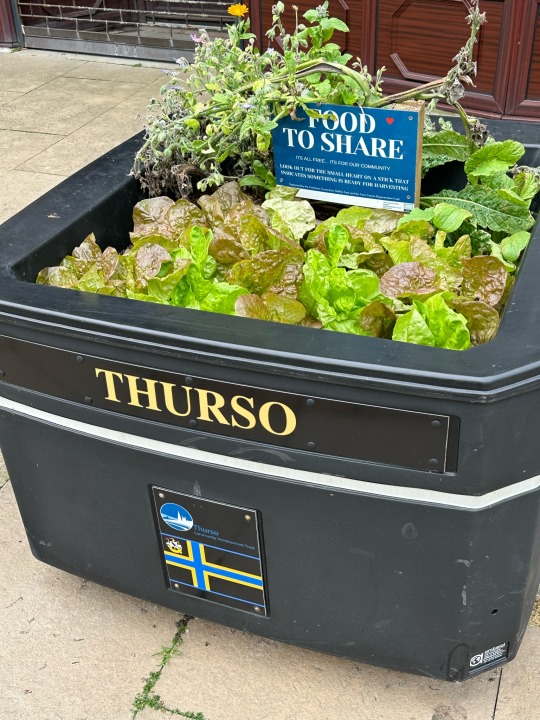
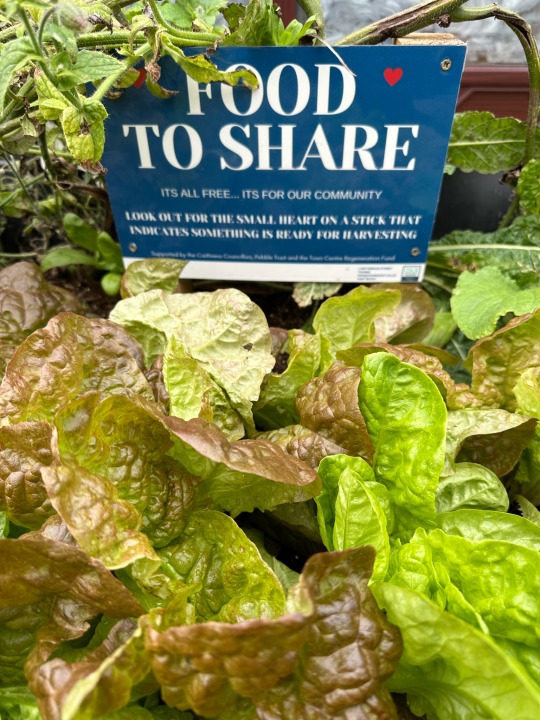
Plant of the Day
Friday 29 September 2023
The lettuce (Lactuca sativa) crop looked good in the help yourself community containers on the high street in Thurso, Scotland. When this annual leaf vegetable is ready to harvest they will put a heart label by the plants.
Jill Raggett
47 notes
·
View notes
Text
Test test test
Lettuce (Lactuca sativa) is an annual plant of the family Asteraceae. It is most often grown as a leaf vegetable, but sometimes for its stem and seeds. Lettuce is most often used for salads, although it is also seen in other kinds of food, such as soups, sandwiches and wraps; it can also be grilled.[3] One variety, celtuce (asparagus lettuce), is grown for its stems, which are eaten either raw or cooked. In addition to its main use as a leafy green, it has also gathered religious and medicinal significance over centuries of human consumption. Europe and North America originally dominated the market for lettuce, but by the late 20th century the consumption of lettuce had spread throughout the world. As of 2021, world production of lettuce and chicory was 27 million tonnes, 53 percent of which came from China.[4]
Who the fuck puts lettuce in soup?
20 notes
·
View notes
Link
1 note
·
View note
Text
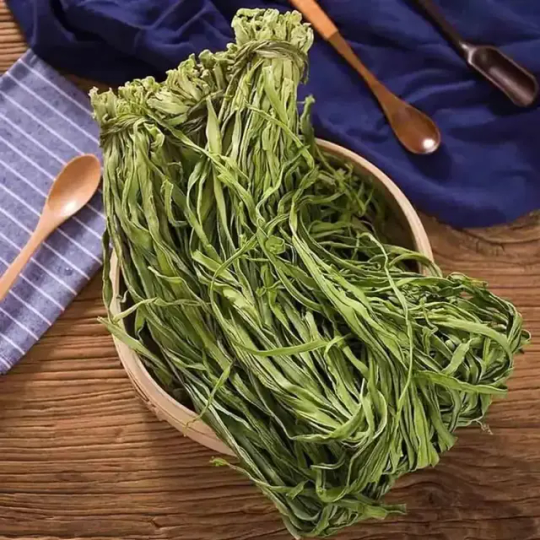
Celtuce Leaf Bundle: Culinary Ingredient and Rau Tien Vua Tea
Explore Exotic Flavors: 100-gram Dried Gong Cai Leaf - Versatile Celtuce for Tea and Culinary Creations
Celtuce, the Vietnamese name for dried Gong Cai Leaf (Lactuca sativa var. augustana), is a plant with a strong flavor that is both a culinary ingredient and a refreshing tea. Try the unique flavor and learn about the various health benefits of celtuce leaves with this 100-gram bundle. Celtuce has long been enjoyed for its nutritious leaves, which are used in cooking and herbal tea. However, it is the plant's thick, edible stem and nutty flavor that have gained it immense reputation. Dehydrated Gong Cai Leaf: A Cellulose Advantage Celtuce is a highly prized and tasty plant that uses every part of its body. The stem is great for salads and stir-fries because of its crisp texture, but the Gong Cai leaves, which are somewhat bitter yet delicious, are the true show-stoppers. Gong Cai tea, made from dried leaves, is a nutritious beverage that also adds flavor and nutrients to a variety of foods. The leaves are rich in vitamins and minerals. Advantages of Wellness Among the many potential health benefits of dried Gong Cai leaves are: Gong Cai is rich in nutrients and makes a great nutritional supplement because to its abundance of beneficial components, including vitamin A, vitamin C, and vitamin K. Celtulose leaves are rich in water and fiber, which help with digestion and keeping you hydrated. Tea for Relaxation: Gong Cai Leaf Recipe Using Dried Leaves: The recommended amount is one cup of boiling water with one or two tablespoons of dried Gong Cai leaves. Try several quantities until you find the one that works best for you. Fill a teapot or infuser halfway with hot water and add the dried leaves before steeping. The tea will only steep for a short while. The taste intensifies as the steeping time increases. Tea leaves should be dipped into the hot water, and the strainer should be discarded. Revel in each sip. You may enhance the flavor of the tea by adding honey or a slice of lemon. Versatility with Food After rehydrating, dried celtuce leaves have other potential uses beyond herbal tea: Broths and soups: A little bit of dried leaf adds a homely taste and some extra nutrients to your favorite broths. Veggie stir-fries: Incorporate the dehydrated leaves into the stir-fry with the other veggies and meat. Soaking the leaves in water until they are soft allows for a distinct texture and flavor that may be cut and used to salads. Storage To maintain their freshness and integrity, store the dried gong cai leaves in a sealed container in a cool, dry location that is not exposed to direct sunlight. The flavor and health benefits of dried leaves can be preserved for several months if stored properly. Key Factors to Keep in Mind Gong Cai leaves are usually safe to eat, but it's best to do a little test beforehand to make sure you don't have any negative responses. Finally, find out how to enhance the flavor of celtuce in many meals by adding dried celtuce leaves. This 100-gram bag is perfect for seasoning food or brewing a calming cup of tea; it would be a welcome addition to any home's teawares.
Gong Cai brings a delicious touch to your meals, boasting a unique flavor akin to watercress or spinach.
This versatile vegetable adds a fun element to cooking; whether stir-fried, steamed, or pickled, Gong Cai fits right in with a variety of dishes.
Using it is a breeze—dried Gong Cai leaves can be soaked in water for a few minutes or added directly to dishes.
If you're feeling like a change, you can even whip up a flavorful tea by steeping the dried leaves in hot water for just 5 minutes.
Beyond taste, Gong Cai contributes a chewy texture, perfect for enhancing the character of stir-fries and salads, providing a delightful contrast to other ingredients.
0 notes
Text
The Best Plants to Grow in a Hydroponic Farms: A Comprehensive List
Hydroponic gardening has become a game-changer for growers seeking efficient, sustainable, and space-saving ways to grow plants without soil. Whether you’re a beginner or a seasoned hydroponic farmer, choosing the right plants to grow is crucial for maximizing yield and ensuring success. In this blog, we’ll explore the best plants to grow in a hydroponic system and how to select the most suitable crops for your setup.
Why Choose Hydroponic Farming?
Before diving into plant selection, it’s important to understand why hydroponics is such an effective growing method. Hydroponics involves growing plants in a nutrient-rich water solution, allowing for faster growth, higher yields, and more efficient resource use than traditional soil-based farming. With no soil, plants rely on water and nutrients directly, which means you have better control over their growth and fewer pests and diseases to manage.
Hydroponics is ideal for small spaces, urban areas, and climates where traditional farming may not be feasible. By growing vertically or in compact systems, hydroponic farms can optimize space and minimize water consumption.
Factors to Consider When Choosing Plants for Hydroponics
When selecting plants to grow in a hydroponic system, it’s essential to consider several factors:
Growth Cycle: Choose plants that have a relatively short growth cycle, especially if you’re growing in a controlled environment like an indoor farm or a small home system. Crops like leafy greens and herbs are great options.
Water and Nutrient Requirements: Different plants have varying needs for water, light, and nutrients. Some crops are more tolerant of hydroponic systems, while others might require more precise conditions.
Space Availability: If space is limited, opt for compact, vertical-growing plants like herbs, lettuce, and strawberries. You can grow more in less space by using a vertical hydroponic setup.
Climate Suitability: Choose plants that thrive in the conditions of your hydroponic system. Some plants, such as tomatoes or cucumbers, require warmer temperatures, while leafy greens like lettuce do better in cooler conditions.
Best Plants to Grow in a Hydroponic System
Now let’s take a closer look at some of the best plants to grow hydroponically.
1. Lettuce (Lactuca sativa)
Lettuce is one of the most popular and easiest crops to grow hydroponically. It thrives in systems like deep water culture (DWC) or nutrient film technique (NFT). Lettuce grows quickly and doesn’t require much space, making it ideal for both beginners and commercial hydroponic farms.
Why It’s Great for Hydroponics:
Grows quickly (often within 3-4 weeks)
Prefers cooler temperatures
Doesn’t require direct sunlight, making it perfect for indoor hydroponic gardens
2. Spinach (Spinacia oleracea)
Spinach is another excellent choice for hydroponic systems. It prefers cooler temperatures and requires moderate amounts of light. Spinach grows rapidly and can be harvested multiple times, allowing for continuous production.
Why It’s Great for Hydroponics:
Thrives in nutrient-rich solutions
Prefers cooler environments
Grows quickly and can be harvested frequently
3. Herbs (Basil, Mint, Parsley, Cilantro)
Herbs are among the easiest plants to grow hydroponically. They require less space and grow quickly in systems like aeroponics and DWC. Whether you’re growing basil for fresh pesto or cilantro for tacos, hydroponics provides the perfect environment for these flavorful crops.
Why They’re Great for Hydroponics:
Grow fast and require minimal space
High-value crops for culinary use
Can be grown year-round, especially in indoor systems
4. Tomatoes (Solanum lycopersicum)
Tomatoes are one of the most rewarding crops to grow hydroponically. With the right system and nutrient management, you can grow sweet, juicy tomatoes year-round. Tomatoes require a bit more attention than leafy greens, but the results are worth it.
Why They’re Great for Hydroponics:
High yield potential in controlled environments
Ideal for vertical hydroponic systems
Requires plenty of light, making them perfect for sunny locations
5. Cucumbers (Cucumis sativus)
Hydroponic cucumbers are a great choice for gardeners with enough vertical space. They grow best in a nutrient film technique (NFT) system or drip system. Cucumbers require a lot of light and can be grown year-round in the right conditions.
Why They’re Great for Hydroponics:
Ideal for vertical farming systems
High yields and fast-growing
Requires plenty of light, making them suitable for greenhouse or sunny environments
6. Strawberries (Fragaria × ananassa)
Strawberries can be grown hydroponically with great success, offering a high-value crop that yields fresh berries year-round. Growing strawberries in a hydroponic system allows you to control variables such as nutrients, water, and light, leading to better fruit production.
Why They’re Great for Hydroponics:
High-value fruit crop with year-round potential
Thrives in vertical hydroponic systems
Requires moderate light and temperature control
7. Peppers (Capsicum spp.)
Peppers, both sweet and hot varieties, can thrive in hydroponic systems, especially vertical setups like those used for tomatoes and cucumbers. They require warm temperatures and lots of light to grow successfully but are otherwise well-suited to hydroponic environments.
Why They’re Great for Hydroponics:
High yield with proper care
Ideal for greenhouse or indoor environments
Grows quickly in warm temperatures
8. Kale (Brassica oleracea)
Kale is a superfood that is well-suited to hydroponic growing. It grows quickly and produces a high yield, making it an excellent choice for hydroponic farmers looking to maximize space and profit. Kale thrives in cooler temperatures and can be grown in systems like NFT and DWC.
Why It’s Great for Hydroponics:
Grows rapidly with proper nutrients
Can be harvested multiple times
Prefers cooler environments, making it perfect for indoor gardens
9. Radishes (Raphanus sativus)
Radishes grow incredibly fast and are great for beginner hydroponic gardeners. They are typically grown in a deep water culture (DWC) or Kratky method system. Radishes grow quickly, often within 3-4 weeks, and do well in a variety of hydroponic setups.
Why They’re Great for Hydroponics:
Fast-growing crop
Easy to maintain and harvest
Requires minimal space, making them ideal for small systems
10. Watercress (Nasturtium officinale)
Watercress is a leafy green that thrives in hydroponic systems, especially aquaponics setups. It grows rapidly and doesn’t require a lot of attention, making it ideal for both beginners and commercial growers. Watercress can be grown year-round in indoor hydroponic systems.
Why It’s Great for Hydroponics:
Grows quickly in nutrient-rich solutions
Suitable for aquaponic systems
Prefers cooler temperatures, ideal for indoor environments
Conclusion
Hydroponic farming offers a diverse range of plants that can be successfully grown without soil. From leafy greens like lettuce and kale to fruit-bearing crops like tomatoes and cucumbers, there are plenty of options for every hydroponic grower. When selecting plants for your hydroponic system, consider factors like growth cycle, space requirements, and climate suitability.
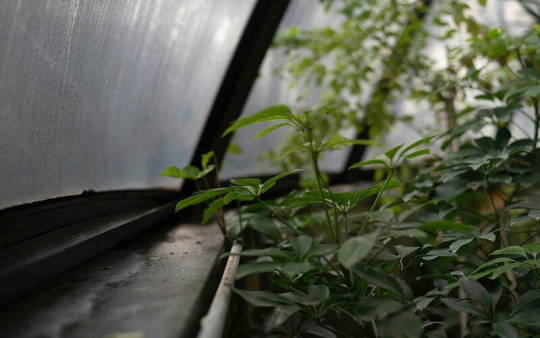
0 notes
Text
Selada (Lactusa sativa)

Selada (Lactuca sativa) adalah tanaman sayuran berdaun yang termasuk dalam keluarga Asteraceae. Selada terkenal sebagai bahan utama dalam salad dan berbagai hidangan segar lainnya.
Ciri-ciri Selada:
Tanaman: Selada merupakan tanaman tahunan yang biasanya dibudidayakan sebagai tanaman sayuran. Tingginya dapat bervariasi antara 15 hingga 30 cm, tergantung pada jenisnya.
Daun: Daun selada berbentuk lebar, bertekstur lembut, dan dapat bervariasi warna dari hijau terang, hijau gelap, hingga ungu. Daun dapat memiliki tepi yang bergerigi atau halus, tergantung pada varietasnya.
Bunga: Bunga selada kecil dan biasanya muncul di bagian atas batang saat tanaman mulai berbunga. Bunga berwarna kuning dan tumbuh dalam kelompok, tetapi biasanya bagian ini tidak dimanfaatkan dalam konsumsi.
Kegunaan:
Konsumsi: Selada umumnya digunakan dalam salad, sandwich, dan hidangan segar lainnya. Rasa selada yang renyah dan segar menjadikannya bahan yang populer dalam berbagai masakan.
Kesehatan: Selada rendah kalori dan kaya akan air, menjadikannya pilihan yang baik untuk diet sehat. Selada mengandung vitamin A, vitamin K, dan sejumlah mineral penting seperti folat dan mangan. Juga memiliki sifat antioksidan yang bermanfaat bagi kesehatan.
Industri: Selain digunakan sebagai makanan, selada juga dapat dijadikan bahan baku untuk produk kesehatan, seperti suplemen yang kaya akan serat.
Habitat:
Selada tumbuh baik di daerah beriklim sedang, lebih menyukai tanah yang subur, kaya nutrisi, dan memiliki drainase baik. Tanaman ini biasanya ditanam di kebun sayur, ladang, atau dalam pot.
Status Konservasi:
Selada tidak termasuk dalam spesies yang terancam punah dan merupakan salah satu sayuran yang banyak dibudidayakan di seluruh dunia.
Makna Simbolis:
Selada sering dianggap sebagai simbol kesegaran dan kesehatan. Dalam budaya tertentu, selada juga dihubungkan dengan keberuntungan dan kehidupan yang baik.
Selada adalah simbol dari keberagaman pangan dan manfaat kesehatan, menjadikannya tanaman yang dihargai dalam konteks kuliner dan gizi.
BERIKUTNYA : LOGIN > DAFTAR >
0 notes
Text
0 notes
Text
Best Companion Plants For Celery: Enhancing Growth and Flavor
Companion planting involves strategically placing plants near each other to benefit one another in various ways, from deterring pests to improving growth and flavor.
When it comes to celery (Apium graveolens), choosing the right companions can enhance its growth and overall health.
Celery, known for its crunchy stalks and distinctive flavor, benefits from companions that provide shade, deter pests, or improve soil conditions. Here’s a guide to some of the best companion plants for celery:

1. Nasturtiums (Tropaeolum spp.)
Nasturtiums are excellent companions for celery due to their ability to repel pests like aphids, whiteflies, and beetles. Their trailing habit also helps provide shade to the celery plants, which prefer cooler soil temperatures.
Additionally, nasturtiums attract beneficial insects such as predatory beetles and parasitic wasps that further protect celery from pests.
2. Onions and Garlic (Allium spp.)
Onions and garlic are classic companions for many garden plants, including celery. They help deter pests like aphids, carrot flies, and spider mites, which can affect celery growth. Planting onions and garlic around celery can improve its flavor and also help in suppressing weeds when planted densely.
3. Beans and Peas (Legume spp.)
Beans and peas are nitrogen-fixing plants that enrich the soil with nitrogen, which is beneficial for celery’s growth.
Celery, being a heavy feeder, benefits from the increased nitrogen availability provided by legumes. Planting beans or peas near celery helps improve its nutrient uptake and overall vigor.
4. Lettuce (Lactuca sativa)
Lettuce makes a great companion for celery because it has shallow roots and grows well in the shade provided by taller celery plants.
This mutual shading helps keep the soil cool and moist, which celery prefers. Additionally, lettuce does not compete heavily with celery for nutrients, making them compatible planting partners.
5. Tomatoes (Solanum lycopersicum)
Tomatoes and celery can be beneficial companions when planted strategically. Celery’s aromatic compounds may help repel pests that commonly affect tomatoes, such as aphids and whiteflies.
However, ensure tomatoes do not overshadow or compete excessively with celery for sunlight and nutrients.
6. Cabbage and Brassicas (Brassica spp.)
Certain brassicas like cabbage, kale, and broccoli can help deter pests that affect celery, such as cabbage worms and aphids. However, be mindful of spacing as these plants can grow large and may shade or compete with celery if planted too closely.
7. Herbs: Dill (Anethum graveolens) and Parsley (Petroselinum crispum)
Herbs like dill and parsley are beneficial companions for celery. Dill attracts beneficial insects like predatory wasps and pollinators, which can help control pests and improve overall garden health. Parsley, with its shallow roots, complements celery well and can enhance its flavor when grown nearby.
Tips for Successful Companion Planting with Celery:
Spacing: Ensure adequate spacing between companion plants and celery to avoid competition for nutrients and sunlight.
Soil Preparation: Celery prefers well-drained, fertile soil. Prepare the soil with compost or organic matter before planting to improve soil structure and nutrient availability.
Rotation: Avoid planting celery in the same location year after year to prevent soil-borne diseases and nutrient depletion. Rotate crops with unrelated plants to maintain soil health.
By choosing the right companions for your celery plants, you can create a thriving garden ecosystem that benefits all plants involved.
Experiment with different combinations based on your garden’s specific conditions and enjoy healthier, more flavorful celery and companion plants throughout the growing season.
0 notes